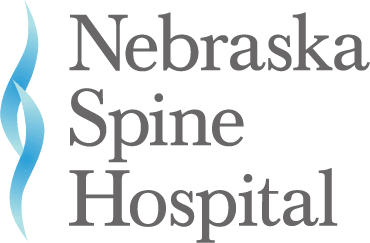Glossary of Spinal Terms
A list of common terms that you may hear during the diagnosis and treatment of your back pain. Always ask your nurse or doctor to explain any term you do not understand.
A list of common spinal terms include:
Stiffening of a joint with fibrous or bony tissue buildup across the joint.
Tough, fibrous outer layers of cartilage that surround the soft central nucleus pulpous of the disc.
Topmost of the cervical (neck) vertebrae, C1.
Second cervical vertebrae, C2, upon which the head rotates.
Common in the aging spine (osteoarthritis). Bone spurs push on nerves causing arm and leg pain.
The seven vertebrae along the back of the neck.
Also called the tailbone. The four fused vertebrae at the base of the spine.
Imaging procedure that takes hundreds of images inside the body. A computer linked to an x-ray machine.
Any symptom or fact that makes the use of a drug, device or procedure inadvisable.
Technique to reduce pressure within the disc by reducing the volume of nuclear material inside the disc.
The molding or shaping of the disc to reduce the pressure inside the disc. Often involves reducing the volume of the tissue inside the disc.
Removal of an intervertebral disc and replacement with a synthetic disc. Often with a discectomy.
Removal of an intervertebral disc.
By injecting reactive dye into the nucleus of the disc, the doctor is able to view the interior of the disc by x-ray.
X-ray visualization of the discs and spine.
Space between vertebrae, where nerves exit.
A medical reason (i.e., symptom, condition, etc.) for suggesting a test or procedure.
Benign, blood-filled cyst of the vertebrae.
A medical reason (i.e., symptom, condition, etc.) for suggesting a test or procedure.
“Between the vertebrae” (such as the discs).
Scheuermann’s kyphosis, also called “hunchback” condition, abnormal curvature of the thoracic spine.
Complete removal of the lamina, relieving pressure on the nerves (in spinal stenosis).
Removal of portion of the lamina, to better access and remove a disc portion.
Low back. Includes L1-L5.
Imaging procedure that uses magnetic scans of the body. Clearest images of the spine.
Two adjacent vertebrae and the disc between them. Allows for movement.
Arthritis by erosion of cartilage. Can be caused by trauma. Soft cartilage results in pain and loss of motion. Most common in the elderly.
An infection of the bone.
A section of fused vertebrae between the lumbar spine and the coccyx. Nerve roots thread through the openings of the sacrum.
Pronounced “si-atic”. Pain, weakness, numbness or tingling in the leg. Caused by injury to or compression of the sciatic nerve.
Abnormal curvature of the spine. Can be a result of bone deformity or unequal muscle contraction.
Removal of a disc and fusion of the adjacent vertebrae into a single “bone”.
Narrowing of the holes in the vertebrae through which the nerves of the spinal cord pass. This narrowing causes pain by pinching the nerves.
“Slippage” or forward movement of one of the lower lumbar vertebrae.
Middle region of the spine. T1-T12. The ribs are attached to the thoracic spine.
